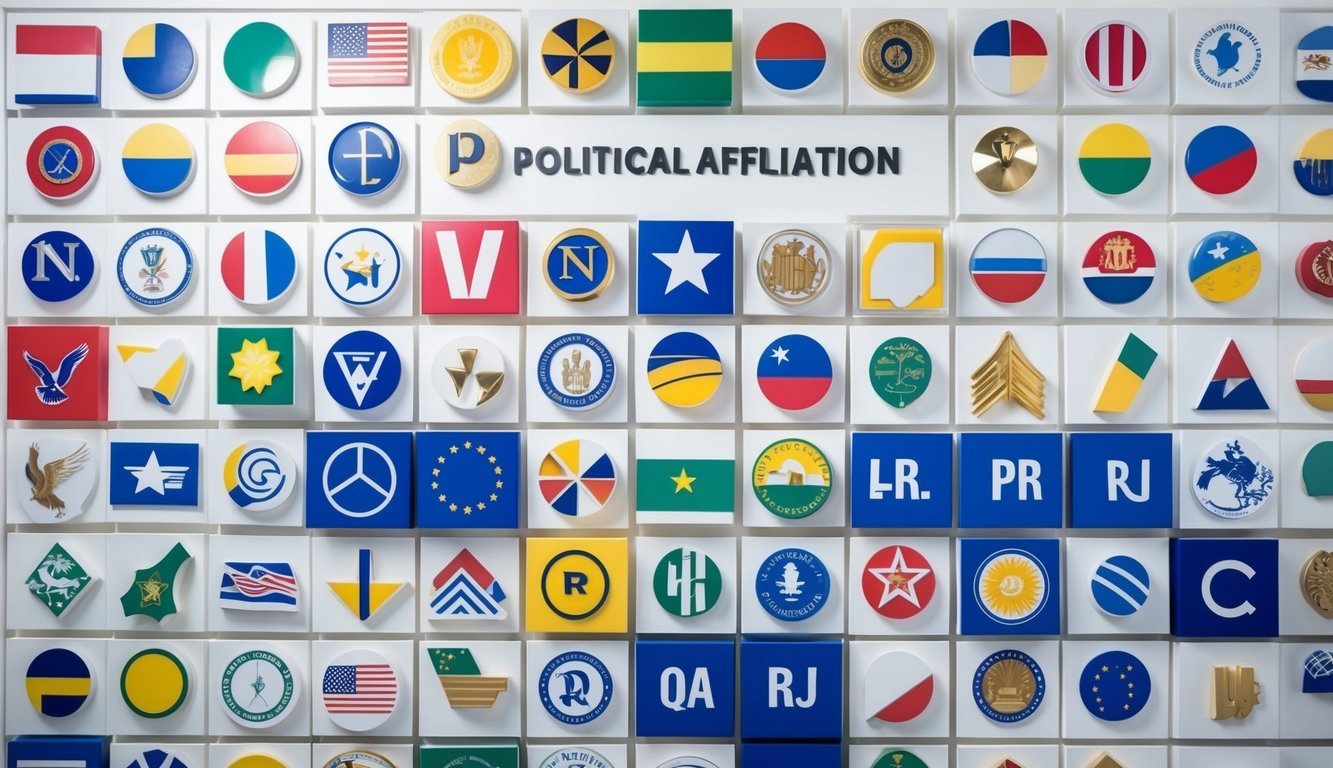PsychNewsDaily Publishers
100 Summit Drive
Burlington, MA, 01803
Telephone: (320) 349-2484
PsychNewsDaily Publishers
100 Summit Drive
Burlington, MA, 01803
Telephone: (320) 349-2484
Facial recognition technology can accurately predict political orientation, revealing potential implications for privacy, social media dynamics, and discrimination based on visual cues.

Recent studies have shown that facial recognition technology can predict a person’s political orientation with surprising accuracy. One study found that images can identify political affiliations with about 72% accuracy, significantly better than random guessing. This raises intriguing questions about how much our faces can reveal about our ideological identities.
These findings come from experimental research that analyzes facial features in relation to political beliefs. The idea that a simple photo could hint at a person’s views on crucial issues is both fascinating and a bit unsettling. As technology advances, understanding the implications of these predictions becomes increasingly important.
With the ability to gauge political leanings from selfies or profile pictures, society may face new challenges and opportunities. As people share their images online, they may be exposing more than just their appearances. What does this mean for personal privacy and political discourse? This blog post will explore these questions and delve into the science behind this powerful technology.

Political orientation refers to an individual’s set of beliefs and opinions regarding political issues. This can include views on government, society, and economics. Different factors influence these orientations, shaping how people identify themselves within the political spectrum.
People often categorize themselves as liberals or conservatives based on their beliefs. Liberals generally support social equality, environmental protection, and government intervention in the economy. They focus on issues like healthcare access and education reform.
On the other hand, conservatives lean toward traditional values and advocate for limited government involvement in the economy. They prioritize free markets and personal responsibility.
These ideological identities can vary widely among individuals. Factors like age, education, and personal experiences play a role in shaping an individual’s beliefs. Understanding this diversity is key to recognizing how people align themselves politically.
Intergroup relations impact political orientation significantly. Individuals often develop their political views based on group identities, such as racial, ethnic, or economic backgrounds.
For example, members of specific communities might support policies that favor their interests. This can lead to stronger ties within their groups but may also create divides with others.
Additionally, social environments influence how individuals perceive political issues. Friends, family, and media all play a part in shaping beliefs. As a result, intergroup relations can reinforce or challenge existing political views, leading to a dynamic political landscape.

This study investigates how facial recognition technology can predict a person’s political orientation with a notable accuracy. It explores the methods used and the level of confidence in the findings.
The researchers used a specific experimental design to gather data. They collected facial images from a diverse group of participants representing various political beliefs. Each photo was analyzed by the facial recognition software to identify trends linked to political orientation.
Participants were classified as liberal or conservative based on their facial features. This allowed the software to learn and recognize patterns. The experimental setup aimed to measure the effectiveness of the software in making accurate predictions.
Additionally, control measures were implemented to ensure that the results were not influenced by external factors. The research focused on the ability of artificial intelligence to interpret small visual cues for decision-making.
The study found that the software could classify political orientation with a 72% accuracy rate. This is significantly better than random guessing, which would be around 50%. The researchers highlighted that such accuracy raises important questions about privacy and ethics.
They compared the software’s results with human judgments, noting that the machine outperformed many individuals. The findings suggest that facial recognition tools can uncover hidden biases based on appearance, which is intriguing but might also be troubling.
It’s essential to note that while the accuracy is high, it does not guarantee correctness for every individual. The researchers called for more studies to verify these findings across different demographics and contexts.

The ability to predict someone’s political orientation from a single photo raises important questions about its impact, especially on social media, and the ethical implications surrounding consent and discrimination. Understanding these points is key as society navigates this technology.
Social media platforms could leverage photographic predictions to target content and advertisements. This means users might see posts designed to match their political beliefs. For example, a conservative user may encounter messages that reinforce their views, while a liberal might face different content.
This targeted approach can deepen existing divides. Users may become trapped in echo chambers, where they only see views similar to their own. Additionally, this practice may lead to increased discrimination against individuals whose political orientation deviates from the mainstream views of their network.
Consent is a significant issue in the use of facial recognition technology. People often share images online without knowing how they may be used or analyzed. They might not consent to predictions about their political beliefs.
This raises ethical questions about privacy. Misuse of this technology can lead to unwanted profiling, creating environments for prejudice and discrimination. Ultimately, it’s essential for platforms to establish clear policies on how they handle photographs and ensure that users have control over their personal information. Clear consent practices can help mitigate risks associated with misuse.

The ability to predict political orientation from a single photo can have significant social consequences. This capability may affect how individuals interact in various spaces, potentially leading to increased polarization. Two crucial areas of concern are the effects on filter bubbles and echo chambers, as well as the potential for intensifying discrimination.
When algorithms can accurately predict political views, people may start to self-select information that aligns with their beliefs. This creates filter bubbles, where individuals are exposed only to ideas and information that reinforce their existing views.
Social media platforms might show images or opinions based on identified political alignments. This can deepen divisions, as users are less likely to encounter differing viewpoints. Echo chambers form when such bubbles amplify extreme opinions.
The result is a more fragmented society that may struggle to communicate across political lines. This lack of interaction can lead to misunderstandings and hostility between groups, making it harder to find common ground.
Predicting political orientation based on facial images could lead to discrimination. People might face bias based on appearance, impacting their professional and social opportunities. For instance, hiring practices may unintentionally favor individuals with faces that align with certain political views.
This could exacerbate prejudice in workplaces or communities, where assumptions are made solely based on looks. There is also the risk that individuals may be targeted or harassed because their political alignments are predicted.
As society becomes more aware of these dynamics, it may lead to calls for regulations on how such technologies are used. The balance between innovation and privacy becomes critical in a world where appearances can shape perceptions and treatment.

This section addresses common questions about how AI predicts political orientation from facial images. It covers techniques, accuracy, individual differences, ethical implications, and the ability to distinguish between political affiliations.
AI uses machine learning algorithms to analyze facial features. These algorithms can include neural networks that evaluate distinct characteristics like facial symmetry, structure, and expression. By training on large datasets, AI learns patterns that correlate specific facial traits with political views.
Research indicates that AI can achieve about 72% accuracy in classifying political orientation from facial images. This accuracy is notably higher than random guessing, which would be about 50%. The effectiveness may vary depending on the algorithms used and the quality of the photos analyzed.
Individual differences such as age, gender, and ethnicity can influence AI’s accuracy. These factors might alter how facial features are perceived. Some groups may be more difficult to classify due to variations in looks or expressions, leading to less accurate predictions.
Using AI to analyze facial images raises privacy concerns. There are questions about consent and the potential for misuse of data. Ethical considerations include whether individuals should be classified by political beliefs based on appearances and the consequences of such judgments.
Facial recognition technology shows promise in differentiating between liberal and conservative appearances. Studies have found that AI can classify images of people based on their political leaning with considerable accuracy. However, this ability may not be foolproof and could depend on context and other variables.
Facial perception is complex. It includes many dimensions such as expressions, angles, and lighting. These factors impact how AI interprets facial images. The interplay of these dimensions can lead to variations in prediction accuracy. Subtle changes can alter how a face is perceived in terms of political orientation.